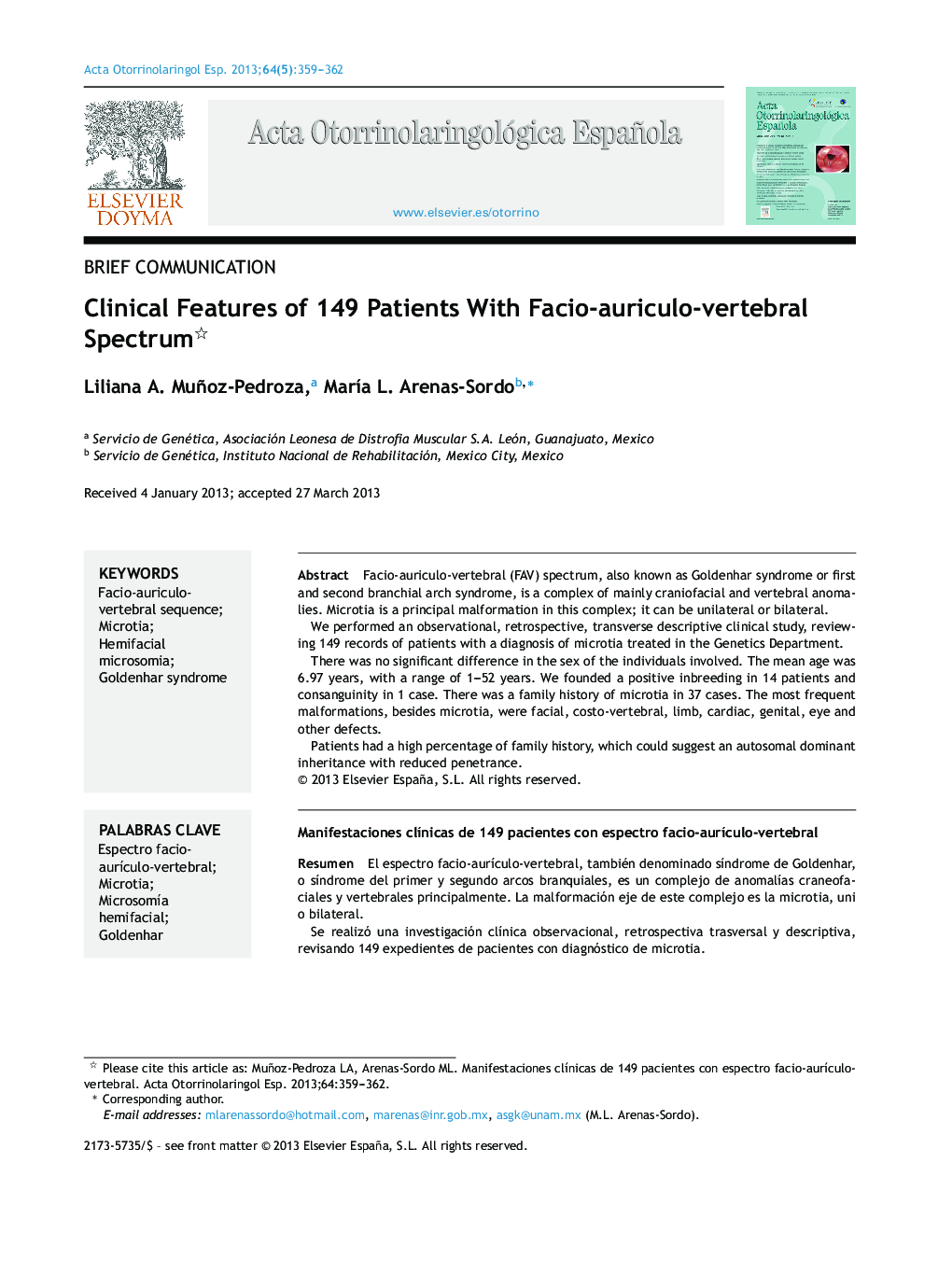| کد مقاله | کد نشریه | سال انتشار | مقاله انگلیسی | نسخه تمام متن |
|---|---|---|---|---|
| 4100956 | 1268737 | 2013 | 4 صفحه PDF | دانلود رایگان |

Facio-auriculo-vertebral (FAV) spectrum, also known as Goldenhar syndrome or first and second branchial arch syndrome, is a complex of mainly craniofacial and vertebral anomalies. Microtia is a principal malformation in this complex; it can be unilateral or bilateral.We performed an observational, retrospective, transverse descriptive clinical study, reviewing 149 records of patients with a diagnosis of microtia treated in the Genetics Department.There was no significant difference in the sex of the individuals involved. The mean age was 6.97 years, with a range of 1–52 years. We founded a positive inbreeding in 14 patients and consanguinity in 1 case. There was a family history of microtia in 37 cases. The most frequent malformations, besides microtia, were facial, costo-vertebral, limb, cardiac, genital, eye and other defects.Patients had a high percentage of family history, which could suggest an autosomal dominant inheritance with reduced penetrance.
ResumenEl espectro facio-aurículo-vertebral, también denominado síndrome de Goldenhar, o síndrome del primer y segundo arcos branquiales, es un complejo de anomalías craneofaciales y vertebrales principalmente. La malformación eje de este complejo es la microtia, uni o bilateral.Se realizó una investigación clínica observacional, retrospectiva trasversal y descriptiva, revisando 149 expedientes de pacientes con diagnóstico de microtia.No hubo diferencia significativa en cuanto al sexo de los afectados. La edad promedio fue de 6,97 años, con un rango de 1 a 52 años. Endogamia positiva en 14 pacientes y consanguinidad en un caso. Antecedentes familiares de microtia en 37 casos. Además de la microtia, las malformaciones más frecuentes fueron: faciales, costo-vertebrales, de extremidades, cardíacas, de genitales, oftalmológicas y otras.Los pacientes tuvieron un porcentaje elevado de antecedentes heredo familiares, lo que podría evidenciar un tipo de herencia autosómica dominante con penetrancia reducida.
Journal: Acta Otorrinolaringologica (English Edition) - Volume 64, Issue 5, September–October 2013, Pages 359–362